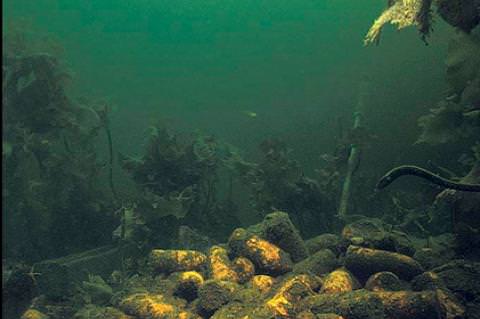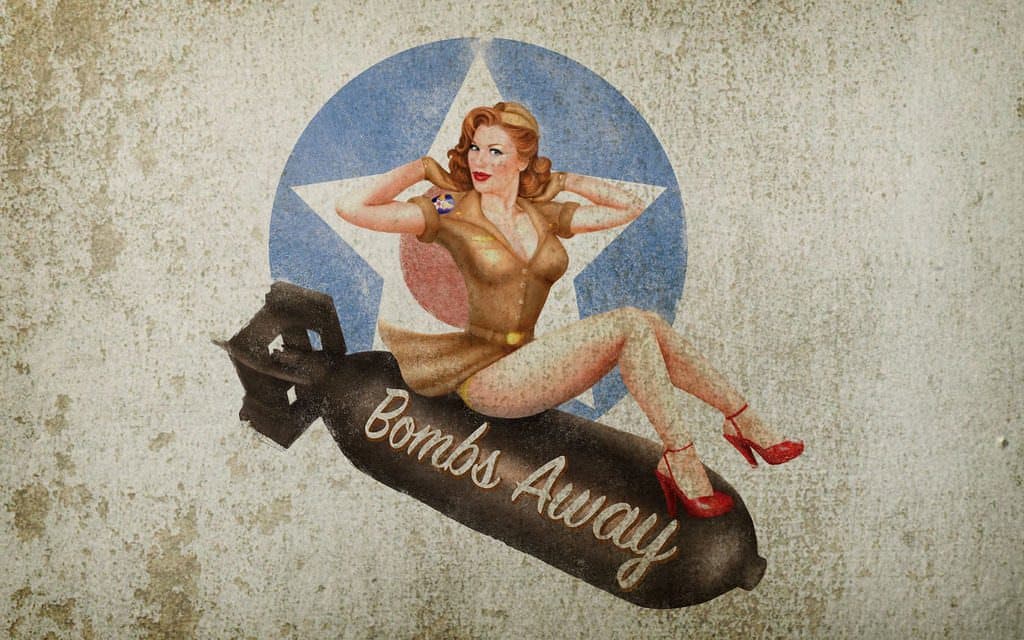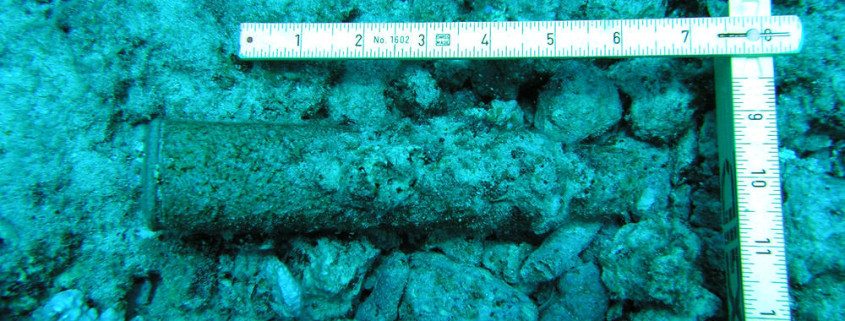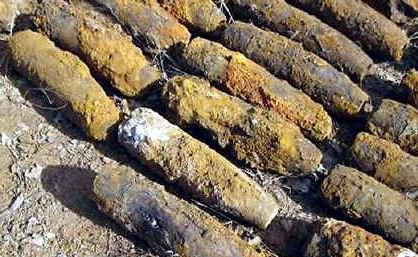WARNING: Handle With Care! Our oceans are home to the discarded munitions of wars past!
In 1987, hundreds of dead dolphins washed up onto the shores of Virginia and New Jersey. Following an investigation, one marine-mammal expert stated that the dolphins showed wounds that resembled chemical burns. It is now believed that these dolphins were exposed to chemical weapons that had been discarded in the ocean. Since World War I, the oceans have been the dumping ground of enormous quantities of captured, damaged, and obsolete chemical, biological, conventional and radiological munitions.
 In many cases, these munitions are resting quietly at the bottom of our oceans. However, in other places, these discarded munitions are causing a myriad of problems. There are risks to both humans and marine ecosystems. Let’s first take a look at the some of the potential risks to humans – explosive or chemically dangerous munitions washing up on beaches, munitions being disturbed/activated by fishing vessels, and the leakage of deadly chemicals into the water contaminating the water and the fish that digest these toxins. As the casings on some of these munitions erode and others detonate, poisonous materials are entering the food chain via plankton.
In many cases, these munitions are resting quietly at the bottom of our oceans. However, in other places, these discarded munitions are causing a myriad of problems. There are risks to both humans and marine ecosystems. Let’s first take a look at the some of the potential risks to humans – explosive or chemically dangerous munitions washing up on beaches, munitions being disturbed/activated by fishing vessels, and the leakage of deadly chemicals into the water contaminating the water and the fish that digest these toxins. As the casings on some of these munitions erode and others detonate, poisonous materials are entering the food chain via plankton.
So, what is being done? In 2004, a Canadian by the name of Terrence Long founded a non-profit organization called the International Dialogue on Underwater Munitions (IDUM). Today, the IDUM is an internationally recognized body where all stakeholders (diplomats, government departments including external affairs, environmental protection and fishery departments, industry, fishermen, salvage divers, oil and gas, militaries and others) can come together in an open and transparent forum to discuss underwater munitions, seek solutions, and promote international teamwork on their issues related to underwater munitions.
In most cases, once an underwater munition has been removed, the problem is removed. That being said, the removal of these munitions can be incredibly dangerous and must be conducted by specialized teams trained in the handling of explosives and hazardous materials. In 2013, tourists visiting the Assateague Island National Seashore, a U.S. National Park on the Maryland coast discovered an unexploded ordnance on the beach. Fortunately they reported the find and the beach was closed while an Army bomb squad exploded the World War II-era munitions.
Between 1941 and 2003, the U.S. Navy occupied about 2/3rds of an Island in Puerto Rico called Vieques. The land was used both as a naval ammunition depot and for live training exercises. Operations included not only the storage and processing of supplies, but also the disposal of wastes and munitions of all types. As of 2004, the EPA had listed the presence of contaminants, such as mercury, lead, copper, magnesium, lithium, napalm, and depleted uranium, as well as unexploded ordnance and remnants of exploded ordnance.
As of 2014, the Navy has spent about $220 million since 2003, to investigate and clean contaminated lands on Vieques. For the remainder of Fiscal Year 2015 Congress appropriated $17 million for the cleanup of Vieques. While it is fantastic that there is forward momentum on the clean-up up this particular area, the effects are showing themselves in many very visible ways. The cancer rate in Vieques is 27% higher than mainland Puerto Rico and the infant mortality rate is much higher than other areas in Puerto Rico. These staggering numbers have turned Vieques into the poster child example of this issue. Unfortunately, the subject of underwater munitions isn’t sexy and doesn’t get the attention that is needs and deserves.
 Things YOU can do to make a difference! Educate yourself on this issue, research where you live and locations you make be visiting, talk to others about this issue so more people know, write to your government representatives to let them know you care about this issue, and if possible, make a donation to organizations like the IDUM so they can advocate for all of us. Underwater munitions might be “out of sight” but they have the capacity to make a huge impact on your health and the health of our future generations.
Things YOU can do to make a difference! Educate yourself on this issue, research where you live and locations you make be visiting, talk to others about this issue so more people know, write to your government representatives to let them know you care about this issue, and if possible, make a donation to organizations like the IDUM so they can advocate for all of us. Underwater munitions might be “out of sight” but they have the capacity to make a huge impact on your health and the health of our future generations.





